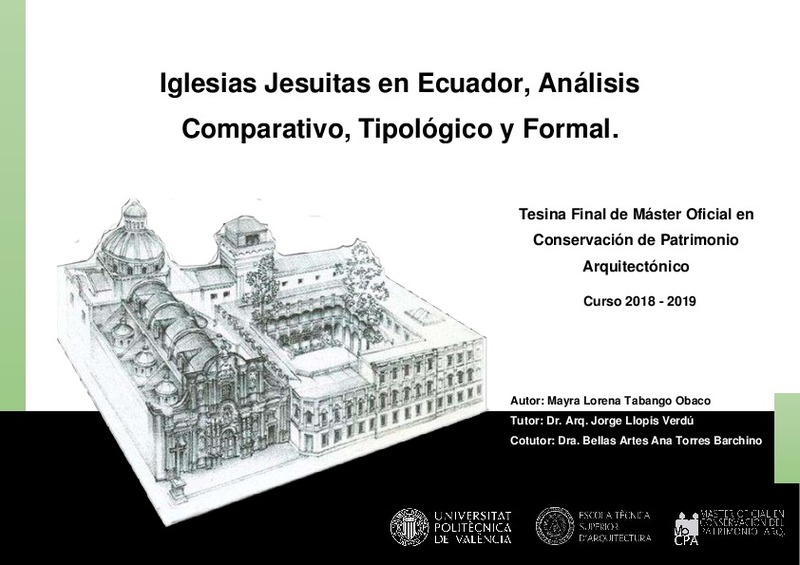|
Resumen:
|
[ES] Las iglesias jesuitas en Latinoamérica representan una tipología arquitectónica caracterizada por la clara uniformidad tipológica derivada de su dependencia directa de las directrices heredadas desde Europa. Al igual ...[+]
[ES] Las iglesias jesuitas en Latinoamérica representan una tipología arquitectónica caracterizada por la clara uniformidad tipológica derivada de su dependencia directa de las directrices heredadas desde Europa. Al igual que en el continente europeo, la arquitectura jesuita siguió la voluntad de uniformidad tipológica originada del Concilio de Trento, que, a partir de la determinación de una liturgia modernizada, concebida para hacer frente al desafío teológico de la Reforma protestante, determinó una nueva concepción espacial para los templos católicos que encontraron en la Iglesia del Gesú de Roma su patrón a imitar, y en obras como las Instructiones fabricae et supellectilis ecclesiasticae, de Carlos Borromeo (1577), un modelo teórico de gran impacto en todo el ámbito arquitectónico católico. Los Jesuitas actuaron como avanzadilla militante de la Contrarreforma Católica, jugando un papel de gran importancia en la definición de la arquitectura religiosa latinoamericana. Destaca la existencia de numerosas iglesias que, a semejanza de los modelos españoles contemporáneos (en los que la Iglesia del Patriarca de Valencia puede servir de ejemplo), mantienen una clara afinidad tipológica en toda la geografía latinoamericana, en clara y directa concordancia con el modelo italiano original. A este modelo siguen iglesias como la iglesia de la Compañía de Jesús en Quito (Ecuador), la iglesia de la Compañía de Jesús en Arequipa (Perú), o la iglesia de San Ignacio de Bogotá (Colombia).
[-]
[EN] The Jesuit churches in Latin America represent an architectural typology characterized by the clear typological uniformity derived from its direct dependence on the guidelines inherited from Europe. As in the European ...[+]
[EN] The Jesuit churches in Latin America represent an architectural typology characterized by the clear typological uniformity derived from its direct dependence on the guidelines inherited from Europe. As in the European continent, the Jesuit architecture followed the will of typological uniformity produced by the Council of Trent, which, based on the determination of a modernized liturgy, conceived to face the theological challenge of the Protestant Reformation, determined a new spatial conception for the catholic temples that found in the Church of the Gesú of Rome their pattern to imitate, as in books like the Instructiones fabricae et supellectilis ecclesiasticae, of Carlos Borromeo (1577), a theoretical model of great impact in all the architectonic Catholic field. The Jesuits acted as militant outpost of the Catholic Counter Reformation, playing a role of great importance in the definition of Latin American religious architecture. It emphasizes the existence of numerous churches that, like the contemporary Spanish models (of which the Church of the Patriarch of Valencia can serve as an example), maintain a clear typological affinity throughout the Latin American geography, in clear and direct agreement with the Italian model original. This model is followed by churches such as the Compañía de Jesús church in Quito (Ecuador), the Compañía de Jesús church in Arequipa (Peru), or the San Ignacio de Bogotá church in Bogota (Colombia).
[-]
|







